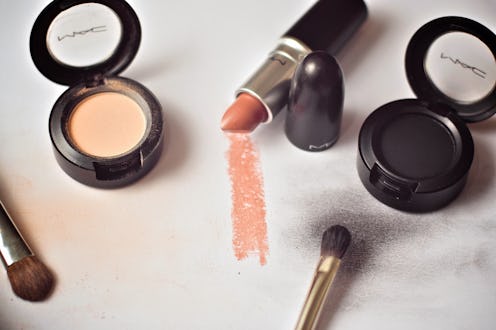Fashion
The Real Danger With Counterfeit Makeup

Sometimes a girl just wants a tube of her favorite lipstick for cheap. Sometimes she finds it on eBay. Sometimes there's arsenic in it.
Be warned, MAC lovers and Benefit obsessives; the FBI has stated unequivocally that "the volume of all sorts of counterfeit cosmetics and fragrances coming into the U.S. is definitely on the rise."
Counterfeit makeup slinging is a pretty low-risk crime, all things considered, since much of it can take place over the Internet, and since the perpetrators, according to the FBI, are mostly located overseas. When ABC Action News tracked down a woman in Riverview, Fla. who had sold them a tube of fake MAC lipstick, she directed them to the Chinese website where she'd been buying her fraudulent stock. The same tube of "MAC" lipstick was being sold there for under a dollar.
Maybe this Florida woman was just trying to pay her Comcast bill, but according to authorities interviewed by ABC News, counterfeit products are "practically an ATM for organized crime." In other words, you never know just who — or what — your black market purchase is supporting, but here are some guesses: terrorism, drugs, or human trafficking.
And that's not the only thing wrong with fake MAC lipstick. The counterfeit products themselves have been found to contain carcinogens like arsenic, beryllium, and cadmium — not to mention a ton of disgusting bacteria. In 2012, Inside Edition tested fake MAC eyeshadows, only to discover that they contained frightening amounts of lead. A dermatologist even told Inside Edition that one of his patients had been permanently scarred after an infection that came from using a fake MAC product.
What to do? Well, the only surefire way to avoid counterfeit makeup or fragrance is to buy from the original vendor, or from "authorized retailers," like department stores and Sephora, who you can usually find using the "Find stores" link on the makeup company's website.
When buying from third-party retailers on eBay or Amazon, there's just no way to know for sure what the origins of the product are, but there are warning signs: inconsistencies between packages (for example, the logo is front and center on one palette, but lower left on another); "limited edition" branding that doesn't actually exist; a large volume of items being sold at once; lower-than-usual prices; sloppy packaging. In person, look for inconsistencies or slight weirdnesses in texture, color, and smell.
The photo above is a good example of MAC makeup to be wary of (there's no way to tell without buying it, but wait! — no returns allowed on this purchase). A single jar of MAC pigment is being sold for $21 on Macy's website, but this vendor is selling eight jars for $22 (the current bid). The description text, too, is a little sketchy: "These are all either a store shelf pull or from a factory pull due to labeling/packaging issues. None of these eyeshadows has a listed shade color and is why they are listed by color."
Under $30 for a little lead in your eyes? It's just not worth it.
Image: idhren/flickr